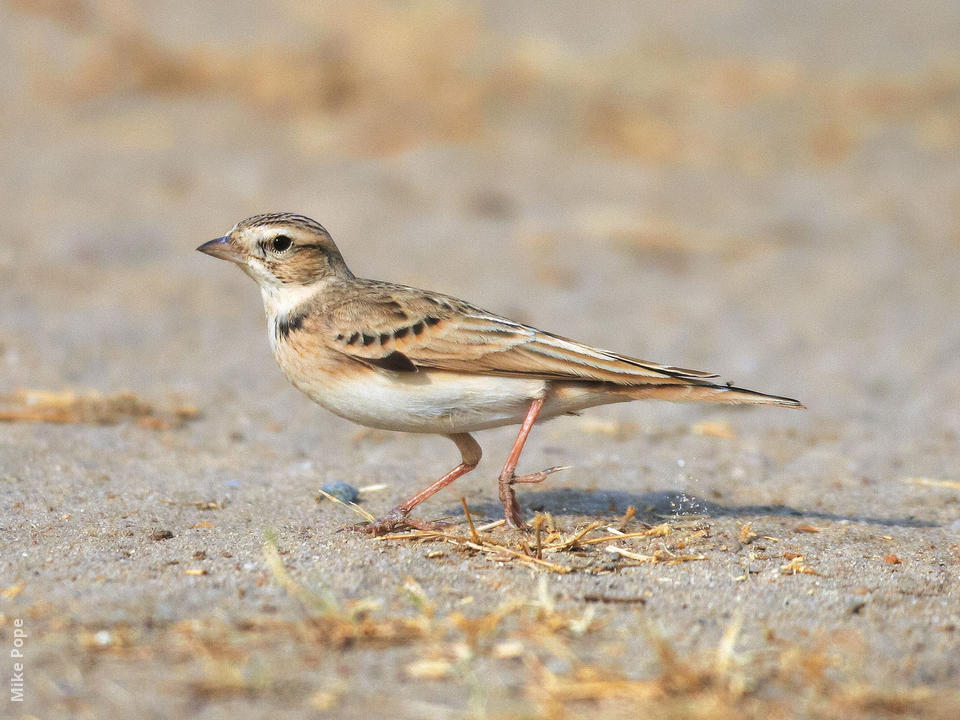
Calandrella brachydactyla
TAXONOMY
Alauda brachydactila Leisler, 1814, France and Italy = Montpellier,
France.
OTHER COMMON NAMES
English: Short-toed lark; French: Alouette calandrelle; German:
Kurzzehenlerche; Spanish: Terrera Grande.
PHYSICAL CHARACTERISTICS
5.1–5.5 in (13–14 cm); male 0.7–1.0 oz (21–28 g); female
0.6–0.9 oz (17–26 g). Small lark with dull, cryptic plumage, no
streaks on chest. Bill short and finchlike. Sexes alike.
DISTRIBUTION
North Africa, southern Europe, eastward from Asia Minor
through Mongolia to China.
HABITAT
Steppe with sparse vegetation, cultivated land, seashores, and
saline areas. Avoids desert, moist areas, and vicinity of forests.
BEHAVIOR
Populations of Europe and Middle East migratory, wintering
south to Sahel and Red Sea. Birds from central Asia winter in
India. Highly gregarious outside breeding season. Song-flight
performed by male in wide circles in sequence of deep and
shallow undulations. Male ascends stepwise, uttering first
phrase of melodious song with imitations of other birds, then
stops singing and beating wings, drops down, ascends, and
drops down again before next ascent, while singing starts again.
Song-flight ends with descent or glide-in stages. Song sometimes
performed from ground or perch.
FEEDING ECOLOGY AND DIET
Diet changes from insects and seeds in summer to nearly exclusively
seeds during winter. Can go for months without
drinking, even drinks brackish water.
REPRODUCTIVE BIOLOGY
Monogamous. Breeds April through June; cup-shaped nest often
surrounded by pieces of mud, dung, and small stones. Female
lays four to five eggs, incubates and broods alone, but
both parents feed young.
CONSERVATION STATUS
Not threatened, though decreasing in France; listed in Annex I
of the European Birds Directive.
SIGNIFICANCE TO HUMANS
None known.
Other popular Animals
Photo Gallery of - Greater short-toed lark




 Animalia Life
Animalia Life